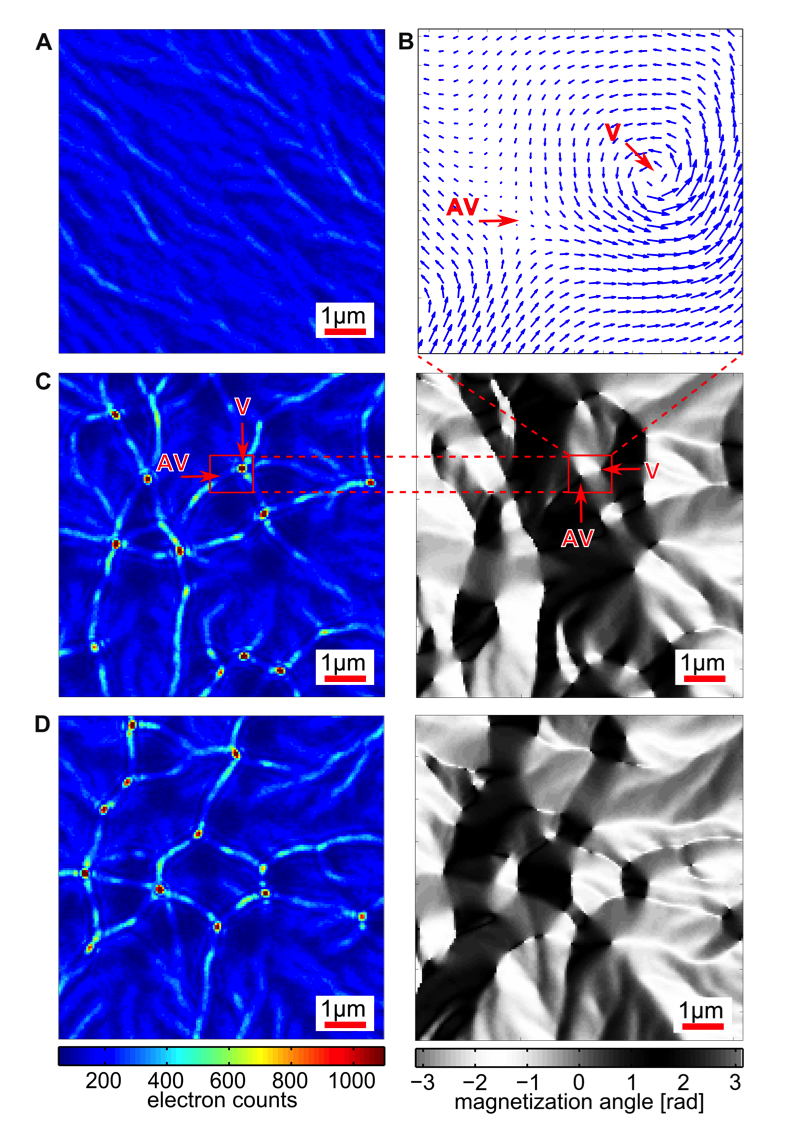IT-8-P-3340 In-Situ Lorentz Microscopy with Femtosecond Optical Illumination
Ultrafast electron microscopy as a laser-pump/ electron-probe technique allows for the investigation of structural and electronic dynamics occurring at sub-picosecond timescales and nanometer length-scales. However, current implementations necessitate compromises in electron source brightness compared to conventional electron microscopy techniques. In-situ transmission electron microscopy with temporally-structured optical sample excitation, i.e. by employing femtosecond laser pulse trains, offers a complementary approach to access ultrafast processes, without the need for customized pulsed electron sources. To this end, we implement free-space-coupled femtosecond sample excitation in a Schottky field-emission electron microscope and investigate the optical response of magnetic domain structures with Lorentz microscopy. Specifically, we study laser-induced domain rearrangements in polycrystalline iron thin films on silicon nitride membranes which are pumped with single sub-50-fs laser pulses. By inverting the observed image contrast at large defocus, we reconstruct the local in-plane sample magnetization based on a transport-of-intensity approach. Prior to laser-excitation, the iron thin films display the well-known magnetic ripple domain structure (cf. Fig. 1A). Upon optical excitation, at laser fluences below a sharp threshold of about 5 mJ/cm2, single laser pulses induce local magnetic domain wall. At laser fluences above the threshold, a single laser pulse generates a network of magnetic vortex/anti-vortex (V/AV) structures, as depicted in Fig 1B-D. Subsequent laser pulses lead to nearly complete rearrangement of the V/AV network (left panels in Fig 1C and D). While the network is stable without optical excitation and shows no discernible dynamics on timescales of minutes to hours, V/AV annihilation can be triggered by illuminating the sample with laser pulses below threshold. After several low fluence optical pulses, the equilibrium ripple domain structure is recovered. The generation of a V/AV-network is remarkable as it presumably is the result of a partially melted, non-equilibrium spin system which is quickly quenched to a metastable state. Possible processes leading to a V/AV network are discussed on the basis of micromagnetic simulations and with respect to ultrafast all-optical pump-probe experiments. The nature and dynamics of the laser-driven magnetic reorganization will be further experimentally investigated with temporally-structured illumination utilizing femtosecond pulse pairs separated by variable time delays. In conclusion, we report the optically-induced vortex/anti-vortex generation mapped by in-situ Lorentz microscopy and discuss possible pathways for their generation.
We gratefully acknowledge financial support by the DGF through SFB 1073 "Atomic Scale Control of Energy Conversion" and by the DFG and the State of Lower Saxony under grant Inst186/867-1FUGG.
